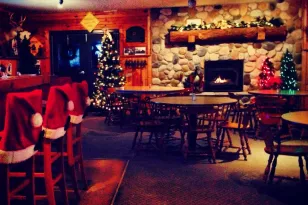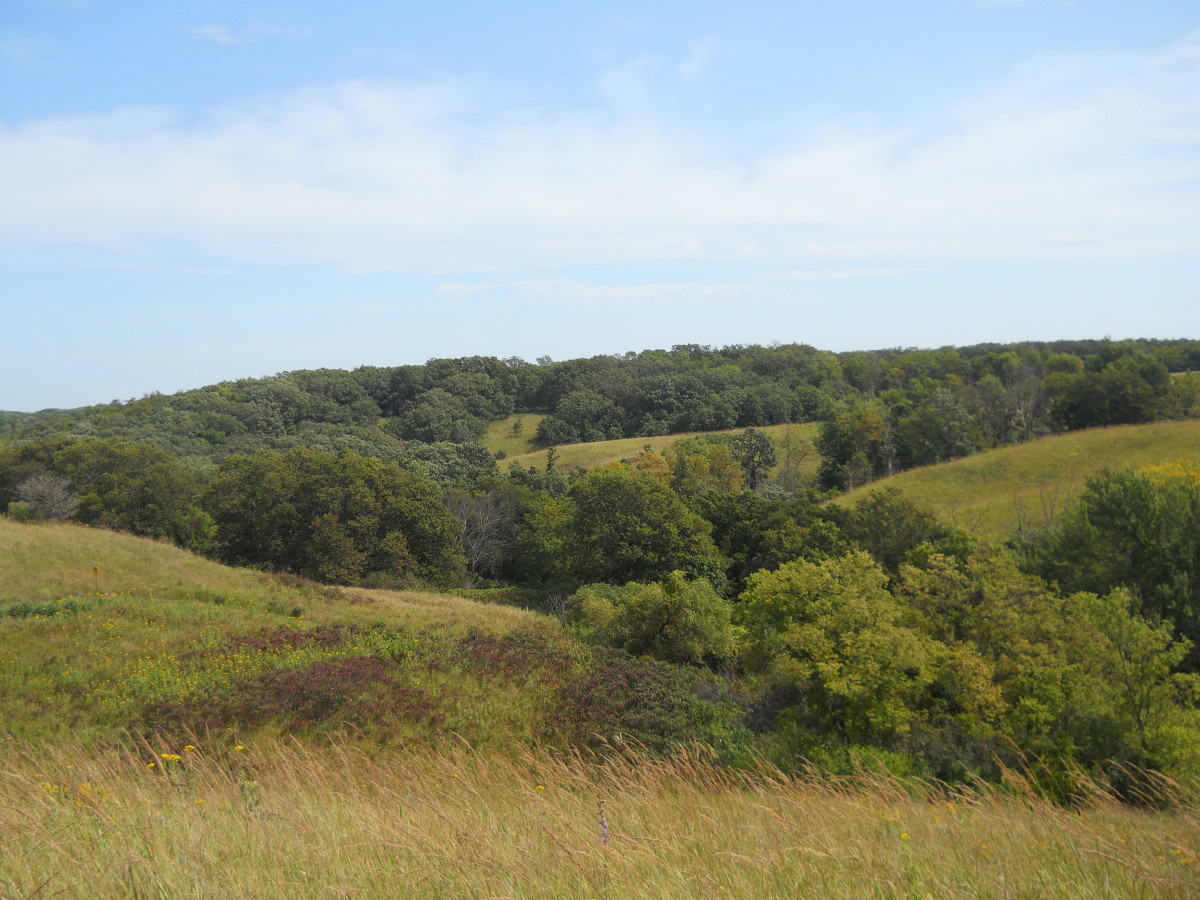 Kilen Woods State Park & Prairie Bush Clover SNA
Kilen Woods State Park & Prairie Bush Clover SNA
About
For a quiet, relaxing time, hike the cool woodland trail which meanders along the tranquil Des Moines River, or enjoy the view of the river valley from Dinosaur Ridge Overlook. You'll find pleasant surprises as you explore small creeks, prairie grasslands, and oak savannas. Visitors enjoy camping, canoeing, fishing, picnicking and hiking.
Wildlife
The Des Moines River provides aquatic habitat for beaver and muskrat. Resourceful anglers catch walleyes, northerns, catfish, and bullheads from the river's pools and numerous snags. Woodducks nest in tree cavities along the river's edge while herons quietly stalk the shallows and back waters. Deer, squirrels and woodpeckers are abundant in the park. Red admiral butterflies are seen all summer long while the swallowtail butterflies are around during late summer.
SNA:
This 13-acre SNA is designated within Kilen Woods State Park in Jackson County, one of a string of SNAs aligned along the Des Moines River.
The SNA is located in an area of the park where ridge tops and steep side slopes host glacial till hill prairie and a small calcareous fen. As the name suggests, this site is most notable for its population of prairie bush clover (Lespedeza leptostachya), listed as a threatened species at both state and federal levels. This species is restricted to the tallgrass prairie region of the upper Mississippi River Valley in the states of Illinois, Iowa, Wisconsin, and Minnesota.
The two colonies of prairie bush clover found within this SNA have been the focus of the longest continuous study of the species, with annual monitoring begun in the early 1980s by Welby Smith and continued by Nancy Sather, botanists with the Minnesota Biological Survey. The study has fostered many insights that inform management across the species' range. "For example," says Sather, "by following the fate of individual plants, we've learned that a single plant can live for years; and, while fecundity (seed production) can be enormous, seedling survivorship is very poor. Also, the appearance of a given plant does not necessarily indicate its age. An established plant that flowered one year may revert to a smaller, non-flowering plant the following year, going back and forth in an unpredictable pattern. The relationship between these morphological changes and their drivers (causes) has not been statistically analyzed, but it is likely drought is a contributing factor."
As Sather, now retired, relates, this SNA is a great example of the substantive and high quality contributions of citizen science. After establishment of the study by Welby Smith, the effort has continued with the contributions of Girl Scouts, 4-Hers, and citizen scientists under the supervision of DNR botanists with the Minnesota Natural Heritage Program and its successor, the Minnesota Biological Survey.
Monitoring goes largely unseen by the public, in steep and relatively inaccessible ravines. But seen or unseen, it's a good reminder of the science that takes place in Minnesota Scientific and Natural Areas, and the cadre of researchers working to understand and protect the state's natural heritage. Long-term studies such as this have merits beyond measure: the data they generate serving as a repository of answers to future questions, not only about the prairie bush clover but about the functioning of Minnesota's ecosystems as a whole.
Visitors here will enjoy ascending the ridge along a mowed park trail to the lovely hill prairie here. Watch for spring's first pasque flowers, and summer's yellow heart-leaved alexanders and orange butterfly weed, blooming among little bluestem and sideoats grama. It's a wonderful opportunity to see this remnant hill prairie in the context of the larger landscape of Kilen Woods State Park with its Des Moines river shoreline, oak forest, oak savanna and overlook of the surrounding bluff country of southwestern Minnesota. As you do, know that somewhere in a quiet draw, a prairie bush clover plant may be shape-shifting for the coming season, for reasons we have yet to fully understand.
Dates
Park permits: $35 annual, $26 second vehicle, $12 handicapped, or $7 daily. Camping fees are separate.
Book an online reservation 24 hours a day.
Phone reservations can be made by calling 866-857-2757 (TTY: 952-936-4008) Apr–Sep, 8 a.m. to 8 p.m.
What's Nearby

Burgers, seafood and steakhouse. We are a sporting clays range, pheasant hunting preserve, and…

"HEAD FOR THE SHED" located in Lakefield, charbroiled burgers-homemade pizza's-cold beer-cocktails…

A small hometown bakery in rural SW Minnesota offering a variety of baked goods.

Number 1 home-style, small town cafe in the surrounding area! Every customer leaves happy, smiling,…
